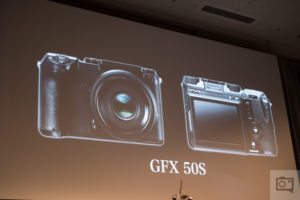
Back when Fujifilm announced the X-A5 in early 2018, it sounded like a really appealing entry-level ILC; in terms of spec, at least. It had an time-tested 24MP APS-C sensor, on-sensor PDAF, a flip-up touchscreen display, 4K video capture, a mic socket and great battery life.
Unfortunately, aside from image quality, the X-A5 turned out to be a pretty lousy camera. It was very sluggish and the autofocus system was unreliable. While it could indeed capture 4K video, it was at 15 frames per second, which is essentially an 8MP burst mode (or silent-era movie simulator). Everyone knows that Fujifilm is capable of making excellent cameras (like the X-T3), which made the X-A5 that much more disappointing.
The new X-A7 gives me hope. It's way faster, has a more robust AF system, a fully articulating touchscreen, AF joystick, a USB-C port and oversampled 4K capture, all for under $700 with a lens. And it comes in mint green!
Aside from the color of the camera Fujifilm sent us, what grabbed my attention first was that 3. 5", 2. 76 million-dot display, which is the best I've seen on a low-priced camera – by a large margin. The screen has a 16:9 aspect ratio, which means that you'll get black margins when shooting stills. But if you're into vlogging, that aspect ratio, paired with the built-in 2. 5mm mic socket (a 3. 5mm adapter is included) and oversampled, uncropped 4K/30p make the X-A7 an appealing option, unless its 15 minute recording limit is an issue.
In order to incorporate the large LCD, Fujifilm has had to redesign the back of the camera. The four-way controller has been replaced by an 8-way joystick which, while on the small side, works well.
Since the four-way controller is gone, getting at some settings is a bit harder. Accessing the touch-enabled Q. Menu requires two taps on the display, while the self-timer needs to be assigned to a custom button (Strangely, there's no way to assign the Q. Menu to a custom button - at least, not yet. )
The rear dial moved to a more traditional position on the top plate, as opposed to the one that was upward-facing dial on the back of earlier models. The power switch has been transformed from a switch to a button that sits in-between all of the dials. As someone who was constantly turning the X-A5 (and X-T100) on and off accidentally due to the switch's placement, I appreciate this change.
The X-A7 has a refined, touch-enabled menu system
While I was drooling over the display, my colleague Carey was scrolling through the menus, noting how much more responsive they were than on the X-A5 and X-T100. While we can't put a number to it, it's clear that the X-A7 got a processor bump of some sort. I wondered if that translated to faster burst shooting or a larger buffer, but it did not: it's still 6 fps, for up to 4-5 shots.
Pressing the menu button brings up this new on-screen UI
After stealing the camera back from Carey, I toyed with the new touchscreen interface, which has simple on-screen buttons for adjusting focus mode, brightness, skin softening and a few other things, depending on the shooting mode. A button for accessing the touch-enabled Q. Menu is also here.
One very cool thing that Fujifilm snuck in appears when you change the Film Simulation mode: a side-by-side view showing comparing your current mode versus the other options. You can even move a slider (shown in the video above) back and forth. This isn't a feature I've been dreaming about, but now that I've seen it, I'm hoping that it appears on more cameras.
It's nice to see that Fujifilm has released a camera that actually surpasses our expectations for an entry-level product
Seeing how I've only used the camera for a day, it's too early to make any judgments about image quality or autofocus performance. Fujifilm says that the 24MP sensor is newly developed, with copper wiring and fast readout speeds (something it also said back when the X-T2 was introduced). The autofocus system has phase-detect points across the whole frame and offers both face and eye detection. Fujifilm has hinted that new AF algorithms will allow the X-A7 to perform as well or better than the X-T30/X-T3. We'll see how it does when we put it in front of a weaving bicycle when a production model appears.
After putting out a bunch of really disappointing X-A series cameras, it's nice to see that Fujifilm has listened to their customers (and perhaps some camera review websites) and released a camera that actually surpasses our expectations for an entry-level product, assuming that the autofocus really is better than the X-A5. How it holds up against competitive products from Canon, Olympus, Panasonic and Sony remains to be seen, but based on my initial tinkering with the camera, I'm definitely impressed.
. dpreview.com2019-9-13 14:00


